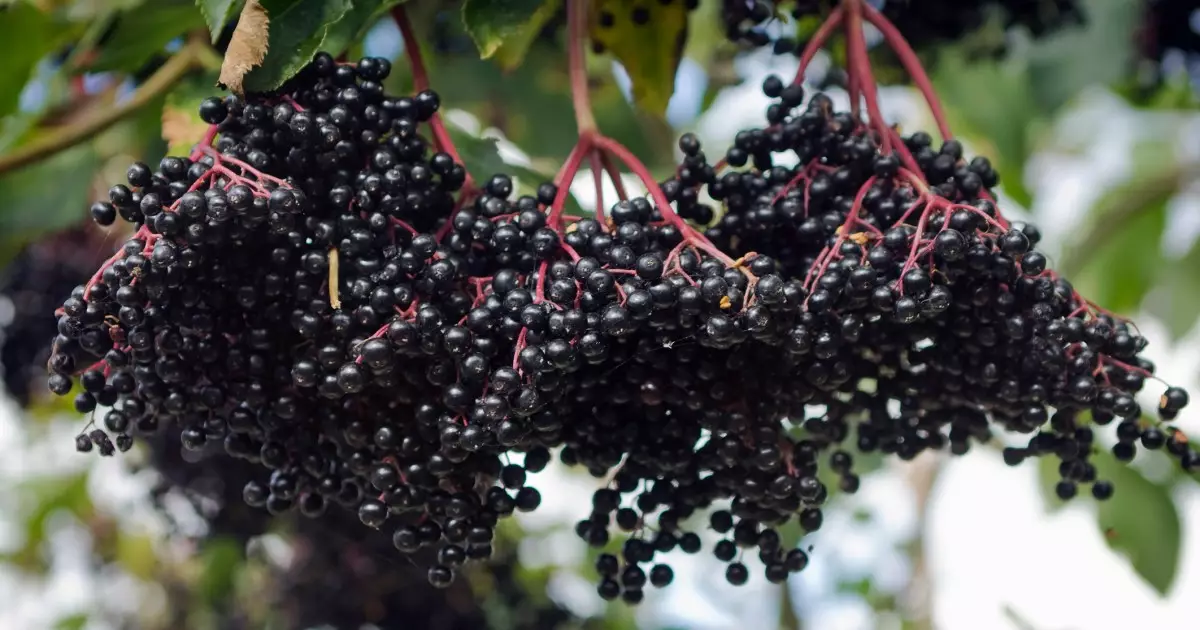Elderberries, the dark purple gems of the fruit world, have gained popularity not just for their delightful flavors in jams and syrups but also for their supposed health benefits. However, the question of whether dogs can safely enjoy these berries is crucial, especially for pet owners who love to share their culinary adventures with their four-legged companions. Unfortunately, the answer is a resounding no; elderberries can pose serious risks to dogs, making it essential for owners to remain vigilant.
The reality is that elderberries are a double-edged sword, presenting both potential nutritional benefits and significant dangers. While fully ripe, processed elderberries may be safe for humans, the same cannot be said for dogs, especially when wild berries are involved. In their natural, unprepared state, elderberries contain compounds that can be toxic, potentially leading to life-threatening situations for our beloved pets.
The Toxicity of Unripened Elderberries
An intrinsic problem lies in recognizing the readiness of elderberries for consumption. Ripe berries can offer a burst of flavor and nutrients, but the danger escalates with the consumption of unripe elderberries, alongside the leaves, stems, and seeds. These plant parts harbor amygdalin, a cyanogenic glycoside that converts into hydrogen cyanide during digestion. This transformation means that even a small quantity of improperly prepared elderberries can quickly turn into a ticking time bomb of toxicity within your dog’s system, leading to potentially fatal outcomes.
This toxicity is not merely theoretical; the consequences are grave and can manifest astonishingly quickly. Symptoms of poisoning can present themselves within just 15 to 20 minutes post-ingestion. By then, time is of the essence—delaying medical attention can lead to catastrophic results, including death within a matter of hours.
Identifying Symptoms of Elderberry Poisoning
As a responsible pet owner, it is imperative to recognize the signs of elderberry poisoning early. Should your dog be unfortunate enough to consume elderberries, immediate intervention is critical. The symptoms to watch for include dilated pupils, cherry-red blood in diarrhea, the scent of bitter almonds on the breath, as well as more alarming symptoms such as tremors, difficulty in breathing, vomiting, and seizures. Any single one of these signs should prompt an urgent trip to the veterinarian.
It’s vital not to engage in self-diagnosis or home remedies. Pet owners may think they can adequately assess the safety of the berries their dog has consumed, but the reality is far more complicated. Various species of elderberries exist, some of which may be even more toxic than others. Notably, the red elderberry variety is particularly notorious for its toxicity, even when ripe. Providing your veterinarian with a sample or description of the consumed berry can significantly assist in treatment.
The Importance of Veterinary Guidance
In situations like this, where the health of your pet is at stake, consulting a veterinarian is paramount. While online articles and social media might suggest anecdotal remedies, nothing can replace professional veterinary advice. The potential for cyanide poisoning, given its rapid progression and lethal consequences, should galvanize pet owners into immediate action.
Even in the event of a dog surviving poisoning with prompt treatment, the possible long-term health effects remain a concern. The effects of toxicity on organs such as the liver and kidneys can lead to further complications down the line, making regular veterinary check-ups essential for survivors.
While elderberries can add a delightful twist to human culinary endeavors, they carry hidden dangers for our canine companions. The intoxicating allure of nature’s bounty can easily lead to unforeseen consequences, and as responsible pet owners, it is our duty to safeguard our furry friends from harm. Understanding the risks associated with elderberries can help you make informed choices about your pet’s health and well-being, ensuring that your time spent outdoors remains a source of joy rather than a cause for concern.

